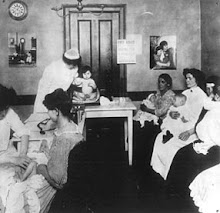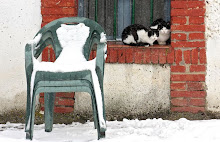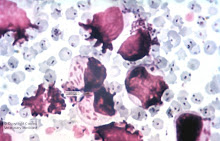The processing of immigrants were different according to their purchasing power, so to speak, people who travelled in first or second class were better treated than “steerage” ones. When any ship arrived, federal officers in charge of inspection (specially administrative inspection) could get into the ship and do their processing there in a superficial way, but only with first class, sometimes with second class, too. If the inspectors thought immigrants were suspected of having problems with their documents or being sick, they were sent to the island definitely. The government thought people who could pay a travel in first or second class didn´t have to be analyzed in the way the “rest” were or in the same place.
The “rest”, that´s to say, the third class were moved from the Hudson or East River piers to Ellis Island in order to pass the whole inspection. They could be healthy, though they had had a throughout travel in bad conditions, what usually turned them into ideal carriers of infectious diseases. If they were approved the processing (administrative and medical), they can enter the country at last. The primary inspection (at first sight, during six seconds) was in the Great Hall (before called the Registry Room). The second inspection was based on the previous one, what mean that people tried to hide obvious signs of disease. Besides there was an important questionnaire called “the ship´s manifest log”, that everybody had to fill; it consisted on twenty-nine personalized questions (name, occupation, monetary level, etc.).
If the medical test with the questions and the documents were in order they could enter definitely in the USA. Sometimes there was any document that was missing or wasn´t in order, they had to sort out it before going to the pier; but, if the problem was in the medical test, the officers should decide, they could deport (about two per cent, approximately) or put into quarantine and treat people in Ellis hospital, observing their progress. The most usual reasons to deny the access were being carrier of chronic contagious diseases, having a criminal background (“become a public charge”), having an illegal contract or having insanity, in general.
There were two agencies that were in charge of the tests, “the USA Public Health Service” and “the Bureau of Immigration” (this one was reconverted on “the Immigration and Naturalization Service”). Although Ellis Island was also known as “The Island of Tears” or “Hearthbreak Island”, more than ninety-seven per cent of people passed the inspections. The other two per cent had to return to their countries again. A “Wall of Honour” shows all the immigrants that were processed in the island from its opening.
These acronyms designating diseases were chalked the clothing of people who were pointed out as probable sick immigrants during the primary medical inspection. the six-second medical examination.
- B - Back
- C - Conjunctivitis
- CT - Trachoma
- E - Eyes
- F - Face
- FT - Feet
- G - Goiter
- H - Heart
- K - Hernia
- L - Lameness
- N - Neck
- P - Physical and Lungs
- PG - Pregnancy
- S - Senility
- SC - Scalp
- SI - Special Inquiry
- X - Suspected Mental defect
- X (circled) - Signs of Mental defect







































No hay comentarios:
Publicar un comentario